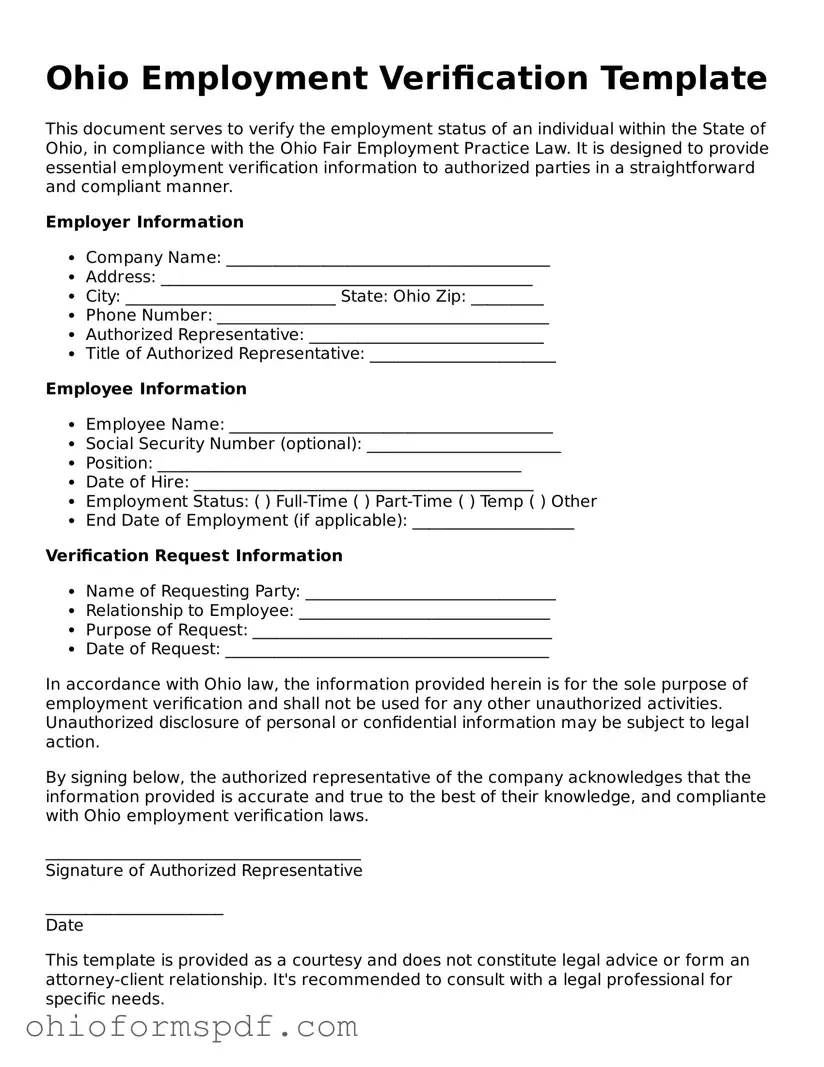The Ohio Employment Verification form echoes the characteristics of the I-9 Employment Eligibility Verification form used throughout the United States. Just like the I-9 form, the Ohio version requires employees to prove their eligibility to work in the U.S. by providing necessary documentation. Both forms serve as a compliance check for employers to ensure they are hiring individuals authorized to work in the country, thus playing a crucial role in the employment process.
Similarly, it shares similarities with the W-4 form, which employees use to determine the amount of federal income tax to withhold from their wages. Although serving a different purpose, both the Ohio Employment Verification form and the W-4 require employees to provide personal information upon their new employment. This information is crucial for payroll and legal compliance, making both documents fundamental at the start of any employment relationship.
The Ohio form also resembles state-specific New Hire Reporting forms, which employers must submit to report a new employee's information to a state directory shortly after hiring. Like these state-specific forms, the Ohio Employment Verification ensures compliance with employment laws, albeit focused more on eligibility to work rather than the collection of data for child support enforcement purposes.
Similarly, the Employment History Verification form, used by employers to verify an employee's previous employment details, parallels the Ohio Employment Verification form in purpose. Both aim to gather accurate information from employees, although the former focuses on past employment while the latter confirms eligibility to work.
The Ohio form aligns with the Direct Deposit Authorization forms commonly used in the hiring process. While Direct Deposit Authorization forms collect banking information to process salary payments electronically, both forms are essential at the initiation of employment for administrative purposes and to ensure a smooth onboarding process.
It can also be compared to Background Check Authorization forms that employees must sign to permit employers to conduct a background check. Although focusing on different aspects – eligibility to work versus verifying the employee's background – both forms are pivotal in the hiring process to ensure the integrity and legality of the employment relationship.
The similarities extend to the Confidentiality Agreement, which, like the Ohio Employment Verification form, is often completed at the start of employment. Though the confidentiality agreement is concerned with the safeguarding of sensitive company information, both documents are critical in setting the terms of the employment relationship right from onset.
The Non-Compete Agreement, which restricts employees from entering into competition with their employer after leaving the company, shares the Ohio form's goal of establishing clear expectations and conditions of employment. Both ensure that agreements crucial to the employment relationship are documented and agreed upon at the beginning.
Lastly, the Ohio Employment Verification form has parallels with the Employee Handbook Acknowledgment form, where employees acknowledge they have received, read, and understood the company’s handbook. While serving different specific purposes, both forms are crucial in documenting key elements of the employee's understanding and agreement to terms of their employment relationship.
